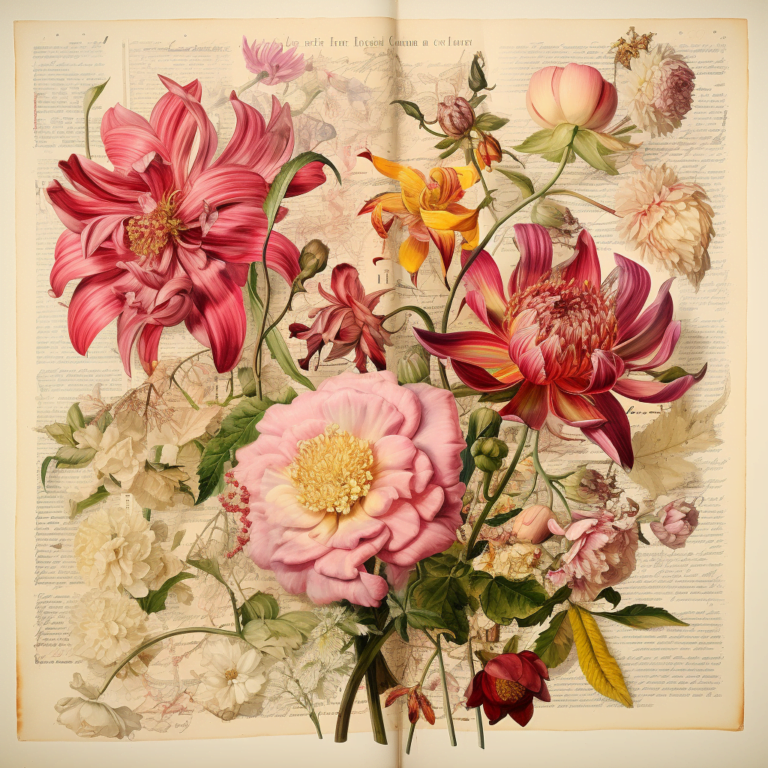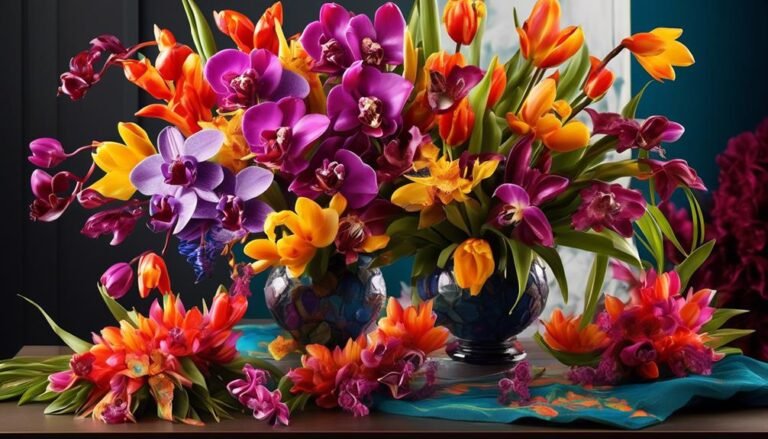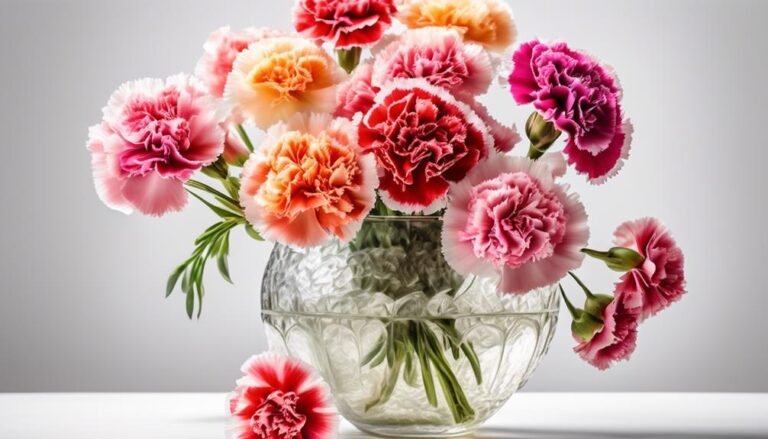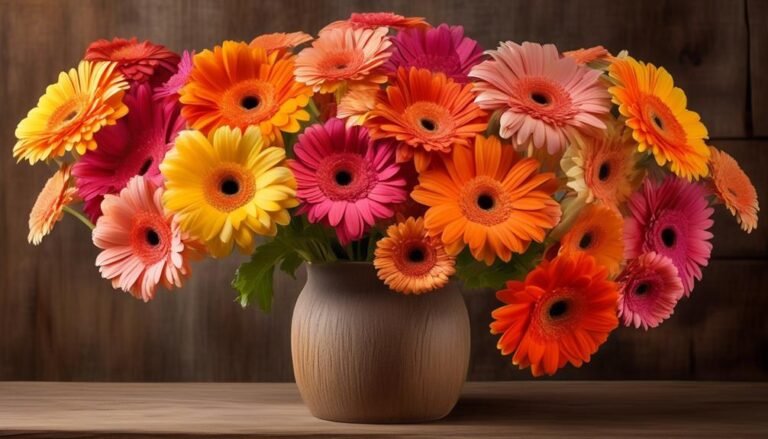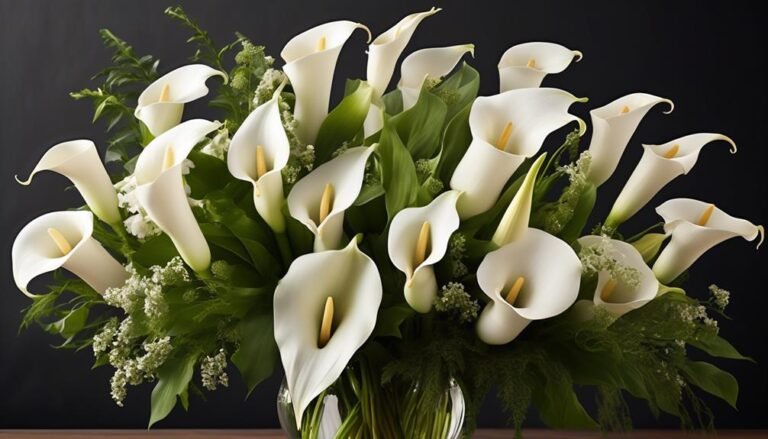Popular Types of Florist Flowers – Gypsophila
Gypsophila, also known as baby's breath, is a popular type of florist flower that offers a fascinating blend of delicate appearance and remarkable hardiness. Despite its unassuming nature, it is a versatile and enduring addition to floral arrangements. Let's delve into the scientific intricacies, historical significance, and diverse varieties of gypsophila to gain a newfound appreciation for this remarkable flower and its role in the world of floristry.
Scientific Intricacies of Gypsophila
Gypsophila belongs to the Caryophyllaceae family and is native to Europe, Asia, and Africa. Its delicate white or pink flowers are composed of tiny, densely packed blooms, creating a cloud-like appearance. This intricate structure allows gypsophila to serve as a beautiful filler in floral designs, complementing focal flowers in arrangements.
Historical Significance of Gypsophila
Gypsophila has a rich historical significance, with its use dating back to ancient times. In Victorian flower language, gypsophila symbolized purity, innocence, and everlasting love, making it a popular choice for bridal bouquets and wedding decor. Its enduring presence in the world of floristry reflects its timeless appeal and cultural significance.
Diverse Varieties of Gypsophila
Gypsophila comes in various cultivars, including the popular 'Bristol Fairy' and 'Perfecta' varieties. These cultivars offer different stem lengths, flower sizes, and vase life, providing florists with options to create diverse floral arrangements. Whether used in wedding centerpieces, bouquets, or everyday floral designs, gypsophila adds a touch of ethereal beauty to any setting.
In conclusion, gypsophila, or baby's breath, is a versatile and enduring florist flower with a fascinating blend of delicate appearance and remarkable hardiness. Its scientific intricacies, historical significance, and diverse varieties contribute to its timeless appeal in the world of floristry.
Scientific Name
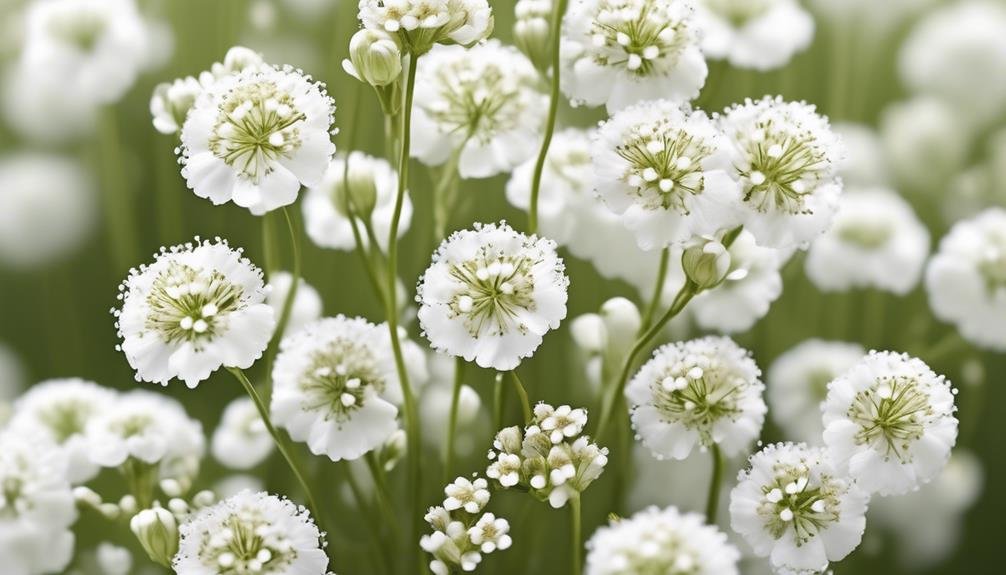
Gypsophila paniculata, commonly known as 'Baby's Breath', is a member of the Caryophyllaceae family. It thrives in well-drained soil with a slightly alkaline pH of 7.0 to 7.5 and requires at least six hours of direct sunlight daily. Adequate air circulation is essential to prevent mildew, especially in humid environments. Proper spacing during planting is crucial to prevent disease. This plant is relatively low-maintenance, needing moderate watering and balanced fertilizer in early spring for healthy growth and abundant blooms.
Symbolically, 'Baby's Breath' represents purity, innocence, and everlasting love. Its delicate, cloud-like appearance makes it popular for weddings, symbolizing sincerity and new beginnings. In various cultures, it also represents fertility, protection, and the divine.
Background History
Gypsophila, commonly known as 'Baby's Breath', has a rich history rooted in its widespread ornamental use and cultivation. Originating in Europe, Asia, and Africa, this delicate flower with its airy structure has become a staple in floral arrangements, particularly in wedding bouquets.
Symbolism and Cultural Significance
Gypsophila holds varying cultural significance across different regions. In some cultures, it symbolizes everlasting love, purity, and innocence, making it a popular choice for weddings and romantic occasions. In other cultures, it represents new beginnings and is often used in baby showers and christenings.
Historical Use in Floral Arrangements
The use of Gypsophila in floral arrangements dates back centuries, and it continues to be a prevalent choice in both traditional and modern bouquets. Its ability to complement various types of flowers and fill out arrangements with its ethereal presence has contributed to its enduring popularity.
Cultivation and Versatility
The cultivation and breeding of different Gypsophila species and cultivars have expanded its availability and versatility in floristry. This has led to a wide range of choices for florists, allowing them to create diverse and creative designs. Additionally, its long vase life makes it a practical and enduring choice for both professional florists and hobbyists.
Physical Description

Gypsophila, also known as 'Baby's Breath', comes in various varieties with distinct physical characteristics, making them popular in floral arrangements and wedding bouquets. These varieties, such as G. paniculata, G. elegans, G. repens, G. cerastioides, and G. Rosenschleier, differ in flower size, color, and habit.
- paniculata has small white flowers and a bushy, mounded habit. G. elegans features compact plants with white, pink, and radial purple streaked flowers. G. repens has mat-forming creeper habits with white, pink to lilac flowers. G. cerastioides is a semi-evergreen dwarf with pink-purple radial streaked flowers, while G. Rosenschleier has bigger panicles and double-form pinkish flowers that fade to white.
The delicate and clustered flowers of 'Baby's Breath' symbolize purity, innocence, and everlasting love, making them popular for weddings and celebrations. Gypsophila thrives in well-draining soil, full sun, and moderate water, and is drought-tolerant, suitable for xeriscaping. When grown in optimal conditions, Gypsophila produces an abundance of flowers, enhancing the beauty of any floral arrangement.
Colours and Characteristics
Gypsophila flowers, also known as baby's breath, are available in pink or white and feature small, delicate blossoms measuring 3.5 to 6 mm. These flowers have an exceptional vase life and are available year-round, making them a popular choice for various floral arrangements. Gypsophila embodies lightness and team spirit and is especially striking when included in mixed bouquets.
In wedding arrangements, Gypsophila adds a touch of elegance and softness, creating a romantic atmosphere. The delicate appearance and enduring nature of Gypsophila perfectly symbolize the purity and everlasting love celebrated in weddings. Its symbolism of lightness and team spirit also reflects the joyous and harmonious atmosphere of matrimonial celebrations.
Gypsophila's versatility in color and vase life makes it ideal for wedding arrangements, where it's often used in bridal bouquets, centerpieces, and floral arches. Whether used as a filler or a focal flower, Gypsophila adds a touch of ethereal beauty to wedding floristry, making it a cherished choice for couples embarking on a lifelong journey together.
Varieties Available

Gypsophila 'Baby's Breath' comes in various varieties, each with unique characteristics suitable for different floral arrangements and garden landscapes.
Gypsophila paniculata is a perennial with a height of 1 to 3 feet, ideal for borders and cutting gardens.
Gypsophila elegans, an annual variety, has larger flowers and is often used in mixed bouquets.
Gypsophila repens is a low-growing groundcover type suitable for rock gardens, while Gypsophila cerastioides is a dwarf variety perfect for small spaces or containers.
Gypsophila Rosenschleier, a taller variety with double-form flowers, is ideal for various uses and has received the RHS Award of Garden Merit.
These Gypsophila varieties are versatile and can be used in weddings, bouquets, and centerpieces.
In garden landscapes, they can serve as border plants, groundcovers, or cascading plants, adding a soft and elegant touch to the overall design.
Seasonal Availability
When planning your floral arrangements, it's important to consider the seasonal availability of Gypsophila, also known as 'Baby's Breath'. These delicate flowers are typically in season during the summer and autumn months, but the availability of specific Gypsophila varieties may vary based on their flowering season. Understanding the seasonal availability of Gypsophila will help you make informed decisions for your floral designs and arrangements.
Using seasonal flowers like Gypsophila offers several benefits. They're at their peak freshness and quality during their season, ensuring the longevity and vibrancy of your arrangements. Additionally, seasonal flowers allow you to align your designs with the natural beauty of each season, enhancing the overall aesthetic appeal. They also often come with cost benefits, as they're more abundant and easier to source during their peak seasons.
To choose the right flowers for each season, it's important to research the specific flowering seasons of different flower varieties. Consider the color palettes and textures characteristic of each season when choosing flowers, as this can enhance the thematic coherence of your designs. Consulting with florists or botanical experts can also provide valuable insights into the ideal flowers for each season and how to incorporate them into your arrangements.
Care Tips

Gypsophila 'Baby's Breath' Care Tips
Sunlight: Gypsophila 'Baby's Breath' thrives in full sun, needing at least 6-8 hours of direct sunlight daily for optimal growth and bloom.
Watering: Ensure well-drained soil to prevent root rot, and water regularly, especially during dry periods.
Propagation: Propagate through seeds in early spring or fall, or through stem cuttings with rooting hormone for successful rooting.
Pruning: Regular pruning is essential to maintain a compact shape. Cutting back the stems just above a leaf node can promote bushier growth and encourage more flowering.
Deadheading: Remove spent flowers to keep the plant tidy and extend the blooming period.
Pest and Disease Control: Keep an eye out for common pests like aphids and diseases such as powdery mildew. Use insecticidal soap for aphids and ensure good air circulation to prevent powdery mildew.
Are Gypsophila and Dahlia Flowers Suitable for the Same Occasions in Floral Arrangements?
Yes, Gypsophila and Dahlia flowers are suitable for the same occasions in floral arrangements. Both types of florist flowers are popular choices for weddings, baby showers, and other celebratory events. Gypsophila, also known as baby’s breath, adds delicate texture, while dahlias bring vibrant color and boldness to arrangements.
Conclusion
Gypsophila, also known as baby's breath, is a popular choice for florists due to its delicate, cloud-like appearance and widespread availability. It comes in various types such as Mikado, Star, and Million Stars, each with different gram weights, offering versatility in floral arrangements.
Gypsophila requires proper care and is available seasonally, making it a beloved and versatile flower in the floral industry. Its airy texture and elegant look make it a perfect addition to any floral arrangement, adding a touch of charm and sophistication.

